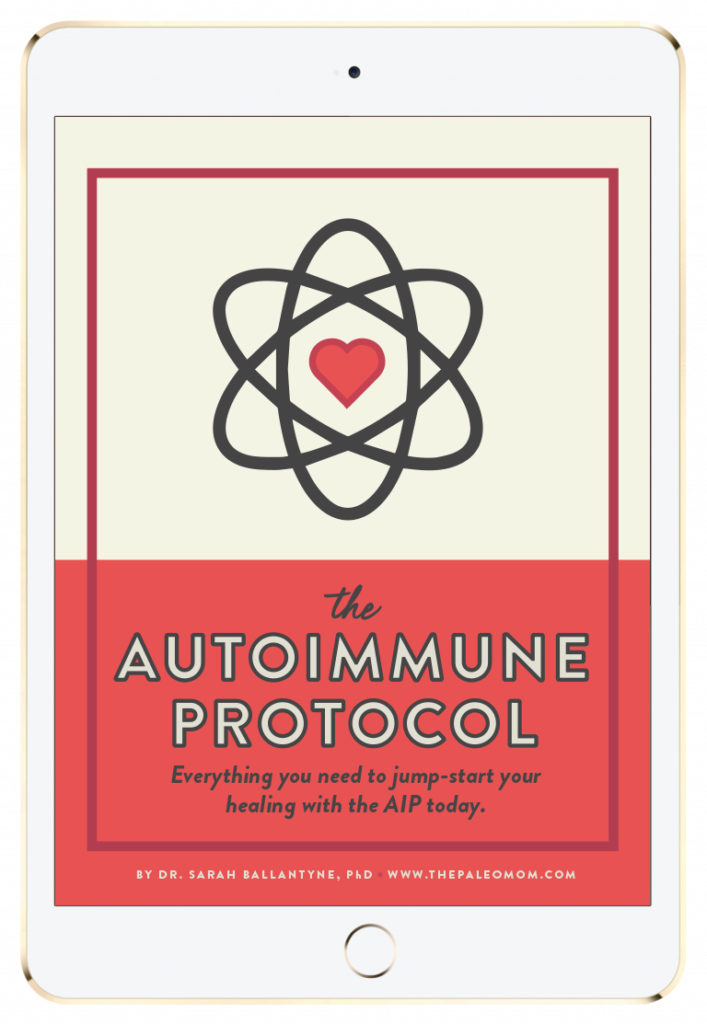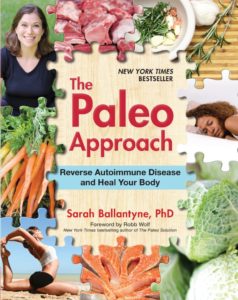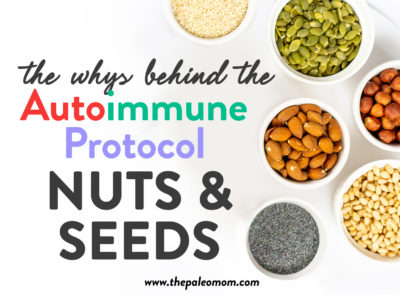Chronic illness is epidemic in our society. More than half of all Americans take two or more prescription drugs, and about one-fifth of us take at least five different daily medications prescribed by our doctors. This isn’t normal. We’re not supposed to be so sick that we need multiple medications to get us through each day. We’re not supposed to be this unhealthy.
Table of Contents[Hide][Show]
Not that long ago, people were substantially healthier. Incidences of just about every chronic health problem—things like cardiovascular disease, obesity, diabetes, asthma, allergies, autoimmune disease, and cancer—are on the rise and have been for several decades. Rates of chronic health problems are so high that nowadays more of us are unhealthy than are healthy. In fact, 85% of healthcare spending is for diagnosis and management of chronic disease.
Importantly, diet and lifestyle are extremely powerful disease modifiers. And while most chronic illnesses can’t be fully cured by changing the foods we eat and our lifestyle priorities, in most cases, we can see notable and marked improvement in symptoms, disease markers, rates of disease progression, risks of complications, need for medication, and quality of life. And for those without chronic illness, healthy and balanced diet and lifestyle choices are our best evidence-based strategy to prevent a chronic illness from developing.
So, what are the best diet and lifestyle choices to mitigate and prevent chronic disease? The Autoimmune Protocol (AIP) is a complementary approach to chronic disease management focused on providing the body with the nutritional resources required for immune regulation, gut health, hormone regulation and tissue healing while removing inflammatory stimuli from both diet and lifestyle. The AIP diet provides balanced and complete nutrition while avoiding processed and refined foods and empty calories. And, the AIP lifestyle encourages sufficient sleep, stress management and activity as these are important immune modulators that also support gut health and hormone regulation. In short, the AIP is a collection of best practices related to diet and lifestyle, not to the exclusion of additional treatments or interventions, that can be individualized to address specific circumstances and goals, framed in the context of a person whose health challenges imply a lower resilience to suboptimal choices.
While the AIP was developed drawing from scientific research of immune function and autoimmune disease (see The Paleo Approach), the principals of the AIP can be applied more broadly. How broadly? That is the question this article intends to answer.
What Is Autoimmune Disease?
Let’s begin with the origins of the Autoimmune Protocol as a complementary approach for autoimmune disease management.
 There are more than one hundred confirmed autoimmune diseases and many more diseases that are suspected of having autoimmune origins. The root cause of all autoimmune diseases is the same: our immune system, which is supposed to protect us from invading microorganisms, turns against us and attacks our proteins, cells, and tissues instead. Which proteins, cells, and tissues are attacked determines the autoimmune disease and its symptoms. In Hashimoto’s thyroiditis, the thyroid gland is attacked. In rheumatoid arthritis, the tissues of your joints are attacked. In psoriasis, proteins within the layers of cells that make up your skin are attacked.
There are more than one hundred confirmed autoimmune diseases and many more diseases that are suspected of having autoimmune origins. The root cause of all autoimmune diseases is the same: our immune system, which is supposed to protect us from invading microorganisms, turns against us and attacks our proteins, cells, and tissues instead. Which proteins, cells, and tissues are attacked determines the autoimmune disease and its symptoms. In Hashimoto’s thyroiditis, the thyroid gland is attacked. In rheumatoid arthritis, the tissues of your joints are attacked. In psoriasis, proteins within the layers of cells that make up your skin are attacked.
How does the immune system get so confused that it starts to attack our own bodies? It turns out that autoimmunity, the ability for the immune system to attack native tissues, is a relatively common accident. In fact, about 30% of people will have measurable levels of autoantibodies (antibodies that bind to some protein in our bodies instead of, or in addition to, a foreign protein, called an antigen) in their blood at any given time. In fact, this accident is so common, that our immune system has several failsafes for identifying autoimmunity and suppressing it. What occurs in autoimmune disease isn’t just the accident of autoimmunity, but also failure of the immune system failsafes, stimulation of the immune system to attack, and the build up of enough damage in cells or tissues within the body to manifest as symptoms of a disease.
This confluence of events that culminates in autoimmune disease is a result of the interactions between your genes and your environment—a perfect storm of factors that cause the immune system to be unable to distinguish self (you) from invader (not you).
Autoimmune diseases may account for as much as half of all chronic diseases suffered by Americans today. The American Autoimmune Related Diseases Association (AARDA) estimates that fifty million Americans suffer from at least one autoimmune disease. In comparison, approximately twelve million Americans suffer from cancer and twenty-five million from heart disease. These numbers are not only staggering in their own right, but the prevalence of autoimmune disease is increasing.
 Autoimmune disease is still greatly underdiagnosed, and the true number of people afflicted remains unknown: it is estimated, for example, that celiac disease has been diagnosed in only 5% of those who actually suffer from it. This is, in part, because autoimmune disease can be challenging to diagnose—it often presents as a collection of vague symptoms (such as fatigue, headaches, and muscle or joint aches). Too often these symptoms are dismissed as signs of getting insufficient sleep, working too hard, stress, being over- or underweight, or age. In fact, a survey performed by AARDA showed that the majority of patients later found to have serious autoimmune conditions had a difficult time obtaining a diagnosis: 45% of them were labeled hypochondriacs in the earliest stages of their illnesses.
Autoimmune disease is still greatly underdiagnosed, and the true number of people afflicted remains unknown: it is estimated, for example, that celiac disease has been diagnosed in only 5% of those who actually suffer from it. This is, in part, because autoimmune disease can be challenging to diagnose—it often presents as a collection of vague symptoms (such as fatigue, headaches, and muscle or joint aches). Too often these symptoms are dismissed as signs of getting insufficient sleep, working too hard, stress, being over- or underweight, or age. In fact, a survey performed by AARDA showed that the majority of patients later found to have serious autoimmune conditions had a difficult time obtaining a diagnosis: 45% of them were labeled hypochondriacs in the earliest stages of their illnesses.
Many people struggle with symptoms, going from specialist to specialist and enduring test after test, to no avail—at least until their disease has progressed to the point at which the symptoms are severe, predictable, and fit into a pattern consistent with a specific autoimmune disease. Unfortunately most of the time, there is no single test that can definitively determine whether you have an autoimmune disease. Rather, doctors must piece together clues from medical histories, symptoms, physical exams, laboratory tests (most commonly blood tests), radiography results, and biopsies. Furthermore, patients may be given a diagnosis without it ever being explained to them that their condition is autoimmune in nature. This happened to me. My first autoimmune disease was diagnosed when I was 16, my second at age 25, but I didn’t find out these were autoimmune in nature until I was researching diet interventions for an additional non-autoimmune condition at age 35.
Save 70% Off the AIP Lecture Series!
Learn everything you need to know about the Autoimmune Protocol to regain your health!
I am loving this AIP course and all the information I am receiving. The amount of work you have put into this is amazing and greatly, GREATLY, appreciated. Thank you so much. Taking this course gives me the knowledge I need to understand why my body is doing what it is doing and reinforces my determination to continue along this dietary path to heal it. Invaluable!
Carmen Maier

List of Autoimmune Diseases
Not sure if a condition you’ve been diagnosed with is autoimmune? The following is the up-to-date list of confirmed and suspected autoimmune diseases compiled by the American Autoimmune Related Diseases Association (aarda.org):
- Achalasia
- Addison’s disease
- Adult Still’s disease
- Agammaglobulinemia
- Alopecia areata
- Amyloidosis
- Ankylosing spondylitis
- Anti-GBM/Anti-TBM nephritis
- Antiphospholipid syndrome
- Autoimmune angioedema
- Autoimmune dysautonomia
- Autoimmune encephalomyelitis
- Autoimmune hepatitis
- Autoimmune inner ear disease (AIED)
- Autoimmune myocarditis
- Autoimmune oophoritis
- Autoimmune orchitis
- Autoimmune pancreatitis
- Autoimmune retinopathy
- Autoimmune urticaria
- Axonal & neuronal neuropathy (AMAN)
- Baló disease
- Behcet’s disease
- Benign mucosal pemphigoid
- Bullous pemphigoid
- Castleman disease (CD)
- Celiac disease
- Chagas disease
- Chronic inflammatory demyelinating polyneuropathy (CIDP)
- Chronic recurrent multifocal osteomyelitis (CRMO)
- Churg-Strauss Syndrome (CSS) or Eosinophilic Granulomatosis (EGPA)
- Cicatricial pemphigoid
- Cogan’s syndrome
- Cold agglutinin disease
- Congenital heart block
- Coxsackie myocarditis
- CREST syndrome
- Crohn’s disease
- Dermatitis herpetiformis
- Dermatomyositis
- Devic’s disease (neuromyelitis optica)
- Discoid lupus
- Dressler’s syndrome
- Endometriosis
- Eosinophilic esophagitis (EoE)
- Eosinophilic fasciitis
- Erythema nodosum
- Essential mixed cryoglobulinemia
- Evans syndrome
- Fibromyalgia
- Fibrosing alveolitis
- Giant cell arteritis (temporal arteritis)
- Giant cell myocarditis
- Glomerulonephritis
- Goodpasture’s syndrome
- Granulomatosis with Polyangiitis
- Graves’ disease
- Guillain-Barre syndrome
- Hashimoto’s thyroiditis
- Hemolytic anemia
- Henoch-Schonlein purpura (HSP)
- Herpes gestationis or pemphigoid gestationis (PG)
- Hidradenitis Suppurativa (HS) (Acne Inversa)
- Hypogammalglobulinemia
- IgA Nephropathy
- IgG4-related sclerosing disease
- Immune thrombocytopenic purpura (ITP)
- Inclusion body myositis (IBM)
- Interstitial cystitis (IC)
- Juvenile arthritis
- Juvenile diabetes (Type 1 diabetes)
- Juvenile myositis (JM)
- Kawasaki disease
- Lambert-Eaton syndrome
- Leukocytoclastic vasculitis
- Lichen planus
- Lichen sclerosus
- Ligneous conjunctivitis
- Linear IgA disease (LAD)
- Lupus
- Lyme disease chronic
- Meniere’s disease
- Microscopic polyangiitis (MPA)
- Mixed connective tissue disease (MCTD)
- Mooren’s ulcer
- Mucha-Habermann disease
- Multifocal Motor Neuropathy (MMN) or MMNCB
- Multiple sclerosis
- Myasthenia gravis
- Myositis
- Narcolepsy
- Neonatal Lupus
- Neuromyelitis optica
- Neutropenia
- Ocular cicatricial pemphigoid
- Optic neuritis
- Palindromic rheumatism (PR)
- PANDAS
- Paraneoplastic cerebellar degeneration (PCD)
- Paroxysmal nocturnal hemoglobinuria (PNH)
- Parry Romberg syndrome
- Pars planitis (peripheral uveitis)
- Parsonage-Turner syndrome
- Pemphigus
- Peripheral neuropathy
- Perivenous encephalomyelitis
- Pernicious anemia (PA)
- POEMS syndrome
- Polyarteritis nodosa
- Polyglandular syndromes type I, II, III
- Polymyalgia rheumatica
- Polymyositis
- Postmyocardial infarction syndrome
- Postpericardiotomy syndrome
- Primary biliary cirrhosis
- Primary sclerosing cholangitis
- Progesterone dermatitis
- Psoriasis
- Psoriatic arthritis
- Pure red cell aplasia (PRCA)
- Pyoderma gangrenosum
- Raynaud’s phenomenon
- Reactive Arthritis
- Reflex sympathetic dystrophy
- Relapsing polychondritis
- Restless legs syndrome (RLS)
- Retroperitoneal fibrosis
- Rheumatic fever
- Rheumatoid arthritis
- Sarcoidosis
- Schmidt syndrome
- Scleritis
- Scleroderma
- Sjögren’s syndrome
- Sperm & testicular autoimmunity
- Stiff person syndrome (SPS)
- Subacute bacterial endocarditis (SBE)
- Susac’s syndrome
- Sympathetic ophthalmia (SO)
- Takayasu’s arteritis
- Temporal arteritis/Giant cell arteritis
- Thrombocytopenic purpura (TTP)
- Tolosa-Hunt syndrome (THS)
- Transverse myelitis
- Type 1 diabetes
- Ulcerative colitis (UC)
- Undifferentiated connective tissue disease (UCTD)
- Uveitis
- Vasculitis
- Vitiligo
- Vogt-Koyanagi-Harada Disease
What Is the AIP?
 The Autoimmune Protocol (AIP) is a complementary approach to chronic disease management focused on providing the body with the opportunity and nutritional resources required for immune regulation, gut health (which includes gut barrier, microbiome, gut-relevant hormones, digestion, and detoxification), hormone regulation and tissue healing while removing inflammatory stimuli from both diet and lifestyle. The AIP is not a substitute for your doctor, but instead is compatible with informed and judicious use of conventional medicine interventions, pharmaceuticals, and supplements, and fully embraces functional medicine.
The Autoimmune Protocol (AIP) is a complementary approach to chronic disease management focused on providing the body with the opportunity and nutritional resources required for immune regulation, gut health (which includes gut barrier, microbiome, gut-relevant hormones, digestion, and detoxification), hormone regulation and tissue healing while removing inflammatory stimuli from both diet and lifestyle. The AIP is not a substitute for your doctor, but instead is compatible with informed and judicious use of conventional medicine interventions, pharmaceuticals, and supplements, and fully embraces functional medicine.
The AIP diet is designed to be balanced, complete and nutrient-sufficient, meaning that it supplies ample and synergistic quantities of all essential and non-essential nutrients. As such, the Autoimmune Protocol places greater emphasis on the most nutrient-dense foods in our food supply, including organ meat, seafood, vegetables, fruit and mushrooms, rounding out with other quality meats, fresh herbs, safe spices, and healthy fats.
Foods can be viewed as having two kinds of constituents within them: those that promote health (like nutrients!) and those that undermine health (like inflammatory compounds). (While there are constituents that neither promote nor undermine health, they are not used to evaluate the merit of an individual food.) Some foods are obvious wins for a health-promoting diet because they have tons of beneficial constituents and very few or no constituents that undermine health—good examples of these superfoods are organ meats, seafood, and most vegetables, fruits and mushrooms. Other foods are obvious fails because they have a relative lack of health-promoting constituents and are rife with problematic compounds—good examples are gluten-containing grains, peanuts, and most soy products (see How Gluten (and other Prolamins) Damage the Gut and Worse than Gluten: The Agglutinin Class of Lectins). But many foods fall into the amorphous world of gray in between these two extremes. Tomatoes, for example, have some exciting nutrients, but they also contain several compounds that are so effective at stimulating the immune system that they have been investigated for use in vaccines as adjuvants (the chemicals in vaccines that enhance your immune response to whatever you’re getting immunized against), see The WHYs behind the Autoimmune Protocol: Nightshades. The biggest difference between a nutrivore diet or standard Paleo diet and the Autoimmune Protocol is where we draw the line between “yes” foods and “no” foods in order to get more health-promoting compounds and fewer detrimental compounds in our diet. Those who are typically quite healthy can tolerate less-optimal foods than those who aren’t. You can think of the Autoimmune Protocol as a pickier version of a nutrivore diet or Paleo diet; it accepts only those foods that are clear winners.
While the stronger focus is on what to eat, rather than what to avoid, the AIP is simultaneously an elimination diet strategy, cutting out the foods that scientific studies show are most likely to be holding back our health, including grains, legumes, dairy, nightshades, eggs and nuts. The goal of the Autoimmune Protocol is to flood the body with nutrients while simultaneously avoiding any food that might be contributing to disease (or at the very least interfering with our efforts to heal). After a period of time, many of the excluded foods, especially those that have nutritional merit despite also containing some (but not too much) potentially detrimental compounds, can be challenged and reintroduced (see The 3 Phases of the Autoimmune Protocol and Reintroducing Foods after Following the Autoimmune Protocol). This process allows for the identification of individual triggers, allowing for each person to hone in on a personalized optimal diet.
The AIP is also a holistic approach to health, including not only a dietary framework but also a focus on lifestyle factors known to be important modulators of immune function, gut health, and hormone health. This includes a strong focus on getting adequate sleep, managing stress, and living an active lifestyle while avoiding overtraining. These three lifestyle factors are each essential for gut health because they directly influence the gut microbiome (getting enough sleep, keeping stress levels in check, and being active are all essential for a healthy and diverse gut microbial community in addition to supporting the growth of key probiotic strains). Chronic stress and overtraining also increase intestinal permeability. Sleep, stress and activity are all essential hormone modulators; for example, insulin sensitivity is more strongly influenced by these lifestyle factors than it is by diet (see 3 Ways to Regulate Insulin that Have Nothing to Do With Food). And, most importantly, immune function is directly tied to lifestyle. Inflammation is triggered by getting inadequate sleep, feeling stressed, being sedentary, and overtraining. Furthermore, the regulatory aspects of the immune system are most active while we’re sleeping, and sleep quality is linked to stress. Additionally, there’s emerging evidence that a strong sense of connection and community as well as spending time in natural environments also contribute to a healthier immune system. See also Sleep and Disease Risk: Scarier than Zombies!, How Stress Undermines Health, The Importance of Exercise, The Benefits of Gentle Movement, Why Exercising Too Much Hurts Your Gut, The Health Benefits of Connection and The Health Benefits of Nature.
Who Is the AIP for?
With autoimmune disease, the most expedient pathway to healing remains the Autoimmune Protocol combined with a functional medicine approach. So, if the AIP is the best path forward for autoimmune disease sufferers, what about healthy people or people diagnosed with other chronic illnesses?
The AIP isn’t just for people with autoimmune disease! Inflammation is a factor in all chronic illnesses, and this is one area where the foods we eat can make a huge difference. In some cases, an immune system that isn’t regulating itself properly directly causes the illness; in others, inflammation is merely an element of the illness or a contributor to how the illness came about—but it is always a player and a problem. What this means is that reducing inflammation and giving the immune system the resources it needs, as well as the opportunity, to regulate itself, can help in every single chronic illness, not just autoimmune disease. The same can be said about gut health and hormone health.
In fact, the central tenets of the AIP—eat a nutrient-sufficient diet, get plenty of sleep, manage stress and live an active lifestyle—are beneficial for everyone. Period.
So let’s examine what this looks like from a more general health perspective.
Nutrient sufficiency, meaning that you consume an ample amount of all the nutrients your body needs, is arguably the most important quality that any dietary approach can have. Every cell, tissue, organ, and system in the human body needs specific amounts of specific nutrients in order to function efficiently and effectively. Nutrients are used not only in the formation the components of our bodies but also in the millions of chemical reactions that occur in our bodies in every moment. We are made of nutrients and our bodies need them to do even basic things like breathing. Every tiny detail of every function of every part of the human body requires nutrients. Macronutrients—protein, fat, and carbohydrates—supply the energy that fuels the complex functions of life. Micronutrients—vitamins, minerals, plant phytochemicals, and other compounds—are necessary resources that get used up in chemical reaction, and our micronutrient stores must be continuously topped up from the foods we eat. Being even slightly deficient in a single essential nutrient can have negative consequences for our health. See also Essential Nutrient Deficiency and Autoimmune Disease and The Importance of Nutrient Density.
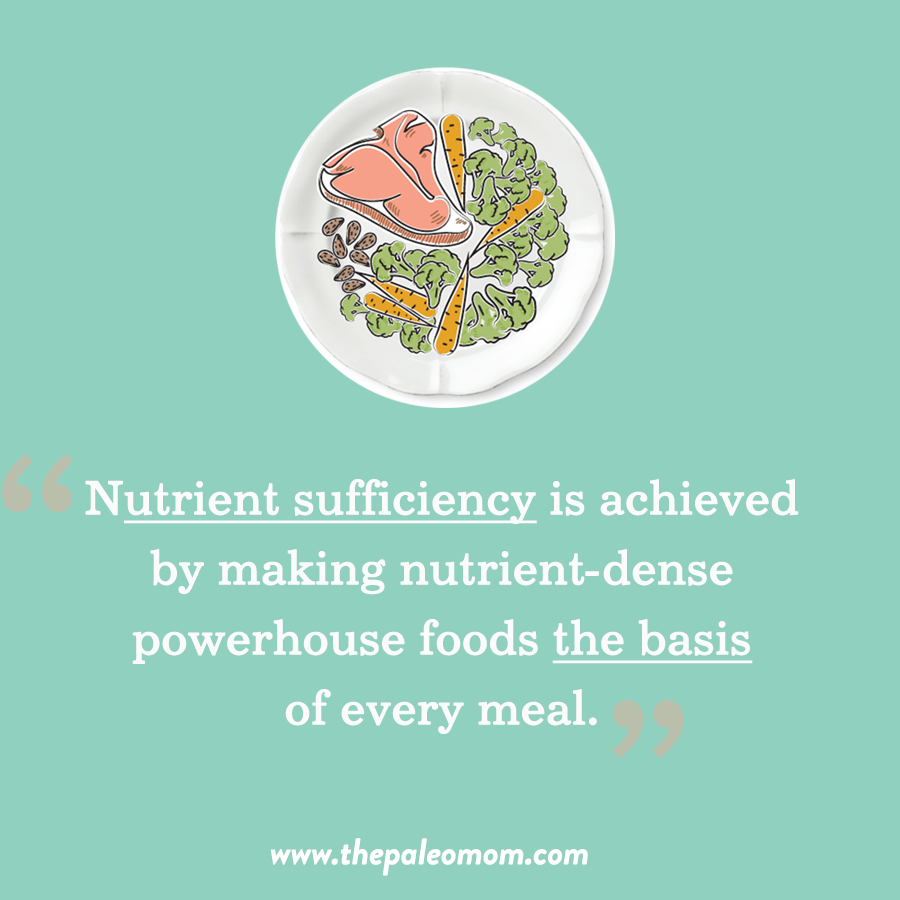 Achieving nutrient sufficiency is achieved by making nutrient-dense powerhouse foods the basis of every meal. This means that every meal would be centered around organ meats, shellfish, brightly pigmented fruit, sea vegetables, fatty fish, cruciferous vegetables, leafy greens, mushrooms, fermented veggies, fresh herbs, and fibrous roots and tubers. Other fruit, vegetables, whitefish, grass-fed and pasture-raised meats, safe spices and healthy fats like extra virgin olive oil round out the diet. Eating 8 or more servings of vegetables per day (mushrooms and fruit are on top of that), seafood most days, and organ meat 3 to 5 times per week is important for nutrient sufficiency.
Achieving nutrient sufficiency is achieved by making nutrient-dense powerhouse foods the basis of every meal. This means that every meal would be centered around organ meats, shellfish, brightly pigmented fruit, sea vegetables, fatty fish, cruciferous vegetables, leafy greens, mushrooms, fermented veggies, fresh herbs, and fibrous roots and tubers. Other fruit, vegetables, whitefish, grass-fed and pasture-raised meats, safe spices and healthy fats like extra virgin olive oil round out the diet. Eating 8 or more servings of vegetables per day (mushrooms and fruit are on top of that), seafood most days, and organ meat 3 to 5 times per week is important for nutrient sufficiency.
Yes, the nutrient-sufficiency tenet of the AIP is just common sense for everyone. But what about the eliminations for healthy people or non-autoimmune chronic illness?
There are some foods that have the capacity to greatly benefit our health, but which might not work for many people with autoimmune disease. These foods earn gray area status because responses to them are individualized, perhaps driven by genetics, and if you are not sensitive, these are foods that can greatly benefit your health. It’s best practice to eliminate these foods fully on during the Elimination Phase of the AIP, but include them as early reintroductions (see also The 3 Phases of the Autoimmune Protocol and Reintroducing Foods after Following the Autoimmune Protocol). But, depending on your individual circumstances, you may opt not to eliminate one or more of these foods initially.
These foods include:
- Peas and Legumes with Edible Pods — see The Green Bean Controversy and Pea-Gate
- Coffee — see Coffee as a Mediator of Health & Longevity and Coffee and Autoimmune Disease
- Chocolate — more information in The Gut Health Guidebook
- Chia — see Are Pseudograins Pseudobad?
- Eggs — see The WHYs behind the Autoimmune Protocol: Eggs
- Nuts and Seeds — Nuts and the Paleo Diet: Moderation is Key
- Spices — see Spices on the Autoimmune Protocol
- Grass-fed A2 Dairy — see Goat Milk: The Benefits of A2 Dairy
Yes, in the context of general health, not everyone will need to eliminate all the avoided foods on the AIP. There’s also extended discussions on all of the above gray-area foods within The Gut Health Guidebook, and see AIP vs. Gut Health Diet.
A diet that is focused on nutrient-sufficiency but with a lesser focus on eliminations than the AIP could be more accurately labelled as a nutrivore diet or a nutrivore implementation of the Paleo diet. What foods you choose to eliminate initially is best determined by your individual health challenges and goals. However, be mindful of your improvements, and remember to periodically reassess. If you’re not where you want to be after a few months, consider eliminating the foods you were initially hesitant to cut out. If you are reacting to a food that you haven’t eliminated, that could be holding back your progress partially or completely. There are also common nutrient deficiencies associated with certain health challenges, as well as certain foods that can be especially beneficial, that may mean additional food focus to reach your health goals. See also Paleo for Asthma and Allergies, Paleo for Mental Health, The Paleo Diet for Diabetes, The Paleo Diet for Skeletal Health, The Paleo Diet for Kidney Disease, The Paleo Diet for Gout, The Paleo Diet for Cardiovascular Disease, Paleo for Pregnancy and Lactation, Paleo for Babies and Toddlers, Paleo for Weight Loss and The Paleo Diet for Performance.
And of course, the AIP isn’t just a diet. The lifestyle priorities of the AIP are just plain ol’ applicable to everyone.
 Studies show that adults need seven to nine hours of sleep every single night (See Sleep Requirements and Debt: How do you know how much sleep you need? and How Much Sleep Do We Need? Understanding the Hunter-Gatherer Evidence). Getting enough sleep reduces the effects of stress on our bodies and has a tremendous positive impact on our hormones, metabolisms, and insulin sensitivity (see 3 Ways to Regulate Insulin that Have Nothing to Do With Food). On the other hand, shortchanging your sleep by even a small amount, even a few times a week, can have terrible consequences for your health. Not getting enough sleep increases the risk of all-cause mortality (your risk of dying, which is a pretty robust measure of overall health and longevity) comparably to being obese, living a sedentary lifestyle, and not eating many vegetables. There are strong causal links between inadequate sleep and cardiovascular disease, diabetes, obesity, autoimmune disease, cancer, inflammation, and susceptibility to infection. (See Sleep and Disease Risk: Scarier than Zombies! and The Link Between Sleep and Your Weight) These links are due to the relationship between sleep (or lack thereof) and immune function as well as the effect that sleep has on many key hormones (such as immune modulators and hunger hormones) and neurotransmitter regulation (including our reward circuitry). In fact, getting sufficient quality sleep may be the single best thing you can do to improve your health. See 10 Tips to Improve Sleep Quality, 4 Biohacks for Better Sleep, 5 Ways to Improve Your Bedroom Environment for Sleep and Go To Bed: 14 Steps to Healthier Sleep
Studies show that adults need seven to nine hours of sleep every single night (See Sleep Requirements and Debt: How do you know how much sleep you need? and How Much Sleep Do We Need? Understanding the Hunter-Gatherer Evidence). Getting enough sleep reduces the effects of stress on our bodies and has a tremendous positive impact on our hormones, metabolisms, and insulin sensitivity (see 3 Ways to Regulate Insulin that Have Nothing to Do With Food). On the other hand, shortchanging your sleep by even a small amount, even a few times a week, can have terrible consequences for your health. Not getting enough sleep increases the risk of all-cause mortality (your risk of dying, which is a pretty robust measure of overall health and longevity) comparably to being obese, living a sedentary lifestyle, and not eating many vegetables. There are strong causal links between inadequate sleep and cardiovascular disease, diabetes, obesity, autoimmune disease, cancer, inflammation, and susceptibility to infection. (See Sleep and Disease Risk: Scarier than Zombies! and The Link Between Sleep and Your Weight) These links are due to the relationship between sleep (or lack thereof) and immune function as well as the effect that sleep has on many key hormones (such as immune modulators and hunger hormones) and neurotransmitter regulation (including our reward circuitry). In fact, getting sufficient quality sleep may be the single best thing you can do to improve your health. See 10 Tips to Improve Sleep Quality, 4 Biohacks for Better Sleep, 5 Ways to Improve Your Bedroom Environment for Sleep and Go To Bed: 14 Steps to Healthier Sleep
Chronic stress increases the risk of depression and anxiety, cardiovascular disease, obesity, diabetes, autoimmune diseases, chronic headaches, memory problems, digestive problems, and infections and is linked with poor wound healing. These effects are believed to be mediated by the activation of the hypothalamic-pituitary-adrenal axis (HPA axis) and the impact that cortisol and other adrenal hormones have on immune function. Plus, chronic stress influences other behaviors, influencing our food choices (due to cravings for energy-dense foods and increased appetite) and making us more vulnerable to addiction. (See How Stress Undermines Health and How Chronic Stress Leads to Hormone Imbalance). Stress has a direct impact on immune system function. Being under chronic stress (the kind that most of us struggle with) both increases inflammation and undermines the regulatory arm of the immune system. Stress is a major contributor to chronic illness, and when stress is out of control, it worsens your prognosis. See also Demystifying Adrenal Fatigue, Pt. 1: What Is Adrenal Fatigue?, Demystifying Adrenal Fatigue, Pt. 2: Testing Adrenal Glandular Function and Demystifying Adrenal Fatigue, Pt. 3: Nutrition & Lifestyle Support for the Adrenal Glands.
 Regular physical activity minimizes the risk of cardiovascular disease, obesity, diabetes, osteoporosis, and some cancers. These benefits are mediated by exercise’s benefits to blood lipids, blood pressure, inflammation, insulin sensitivity, coronary blood flow, endothelial function, and oxidative stress. In fact, a sedentary lifestyle is one of the leading risk factors for chronic disease; for every hour of daily activity (even light) that replaces sedentary time, risk of all-cause mortality drops by an impressive 16%! Simply walking briskly for 30 minutes five times per week can reduce the incidence of coronary artery disease by 30% to 40% in women and about 25% in men. And, regular mild- and moderate-intensity exercise has been shown to reduce inflammation while improving immune function, with benefits compounding over time. One study showed measurable improvements in immune function immediately after a 90-minute yoga class. Another study determined that walking five times per week for 45 minutes gradually increased a marker of a healthy immune system, reaching a maximum after 3 years. So not only do you get immediate immune benefits from moderately-intense activity, but the benefits continue to build over years of commitment to an active lifestyle. See The Importance of Exercise, The Benefits of Gentle Movement and Why Exercising Too Much Hurts Your Gut.
Regular physical activity minimizes the risk of cardiovascular disease, obesity, diabetes, osteoporosis, and some cancers. These benefits are mediated by exercise’s benefits to blood lipids, blood pressure, inflammation, insulin sensitivity, coronary blood flow, endothelial function, and oxidative stress. In fact, a sedentary lifestyle is one of the leading risk factors for chronic disease; for every hour of daily activity (even light) that replaces sedentary time, risk of all-cause mortality drops by an impressive 16%! Simply walking briskly for 30 minutes five times per week can reduce the incidence of coronary artery disease by 30% to 40% in women and about 25% in men. And, regular mild- and moderate-intensity exercise has been shown to reduce inflammation while improving immune function, with benefits compounding over time. One study showed measurable improvements in immune function immediately after a 90-minute yoga class. Another study determined that walking five times per week for 45 minutes gradually increased a marker of a healthy immune system, reaching a maximum after 3 years. So not only do you get immediate immune benefits from moderately-intense activity, but the benefits continue to build over years of commitment to an active lifestyle. See The Importance of Exercise, The Benefits of Gentle Movement and Why Exercising Too Much Hurts Your Gut.
Should everyone follow the AIP? Good health comes from a collection of small changes, each one contributing its own tiny bit to an overall big improvement. While the extent of eliminations will vary based on each person’s health history, challenges and goals, at its core, that’s what the Autoimmune Protocol is: a framework for informing your day-to-day diet and lifestyle choices, empowering self-discovery, to truly support better health.
Learn More About the AIP
I firmly believe that a thorough understanding of the details is key to utilizing the AIP successfully, whether adopting a more relaxed version for general health or adapting the AIP for non-autoimmune chronic illness.
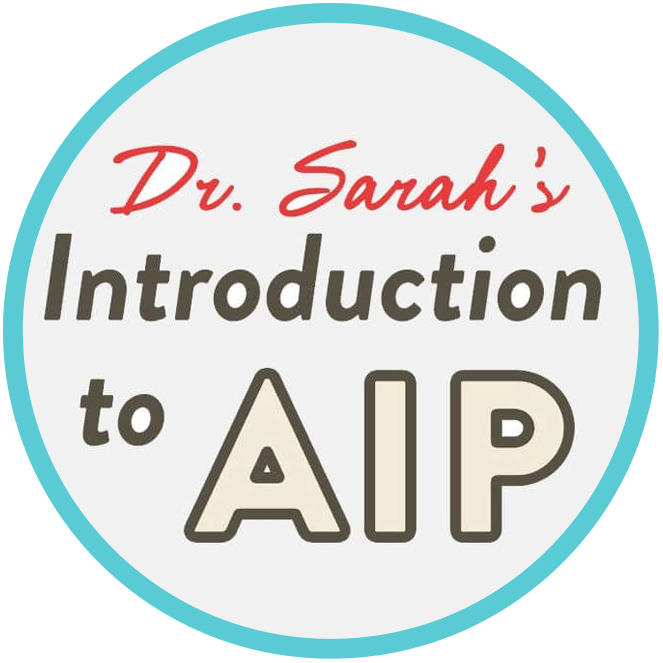
Below, I’ve ordered my AIP educational resources geared at autoimmune disease sufferers and their caregivers from introductory quick-start to detailed deep-dive, as well as from independent to interactive.
Intro to AIP‘ free e-mail series
I recently completely revamped my 15-part Intro to AIP e-mail series. This is a great starting point if you’re curious about the AIP but don’t feel the need to rush in (you’ll be delivered the e-mails over a month, but you’ll also get my AIP Quickstart Guide as a free download right away). You can sign up for the series here.
 The Autoimmune Protocol e-book
The Autoimmune Protocol e-book
With this all-in-one e-book, you’ll be able to hone in on the information that matters most, including 300+ pages of quick-access information on the AIP, new information on why nutrient sufficiency and gut health are a primary focus of the AIP, 4 weeks of meal plans with shopping lists, over 80 family-friendly recipes, and more! This is a great starting point if you want everything you need to jump right in all in one place, but without diving deep into the why’s. Get it here.
The Paleo Approach book
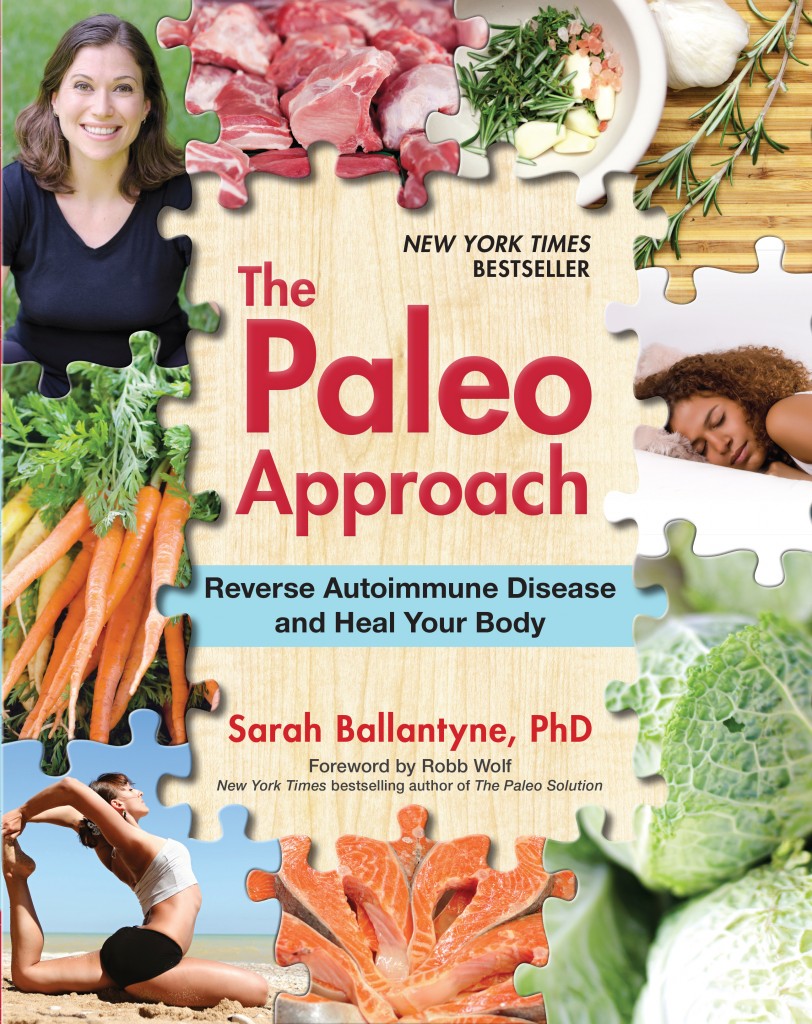 The Paleo Approach is the definitive guidebook on the Autoimmune Protocol. With over 400 pages of scientific explanations of the why’s, what’s, and how’s behind diet and lifestyle recommendations to help regulate the immune system and provide the body with the opportunity to heal. This encyclopedic resource also contains tons of practical information including tips for transitions, working with your doctor, medical test and treatments that might be helpful, troubleshooting, and when and how to reintroduce foods. This is a great starting point if you need to know the why’s to be motivated to make positive changes, or if you learn better reading an actual physical book (highlighters and postits welcome!). Get it here.
The Paleo Approach is the definitive guidebook on the Autoimmune Protocol. With over 400 pages of scientific explanations of the why’s, what’s, and how’s behind diet and lifestyle recommendations to help regulate the immune system and provide the body with the opportunity to heal. This encyclopedic resource also contains tons of practical information including tips for transitions, working with your doctor, medical test and treatments that might be helpful, troubleshooting, and when and how to reintroduce foods. This is a great starting point if you need to know the why’s to be motivated to make positive changes, or if you learn better reading an actual physical book (highlighters and postits welcome!). Get it here.
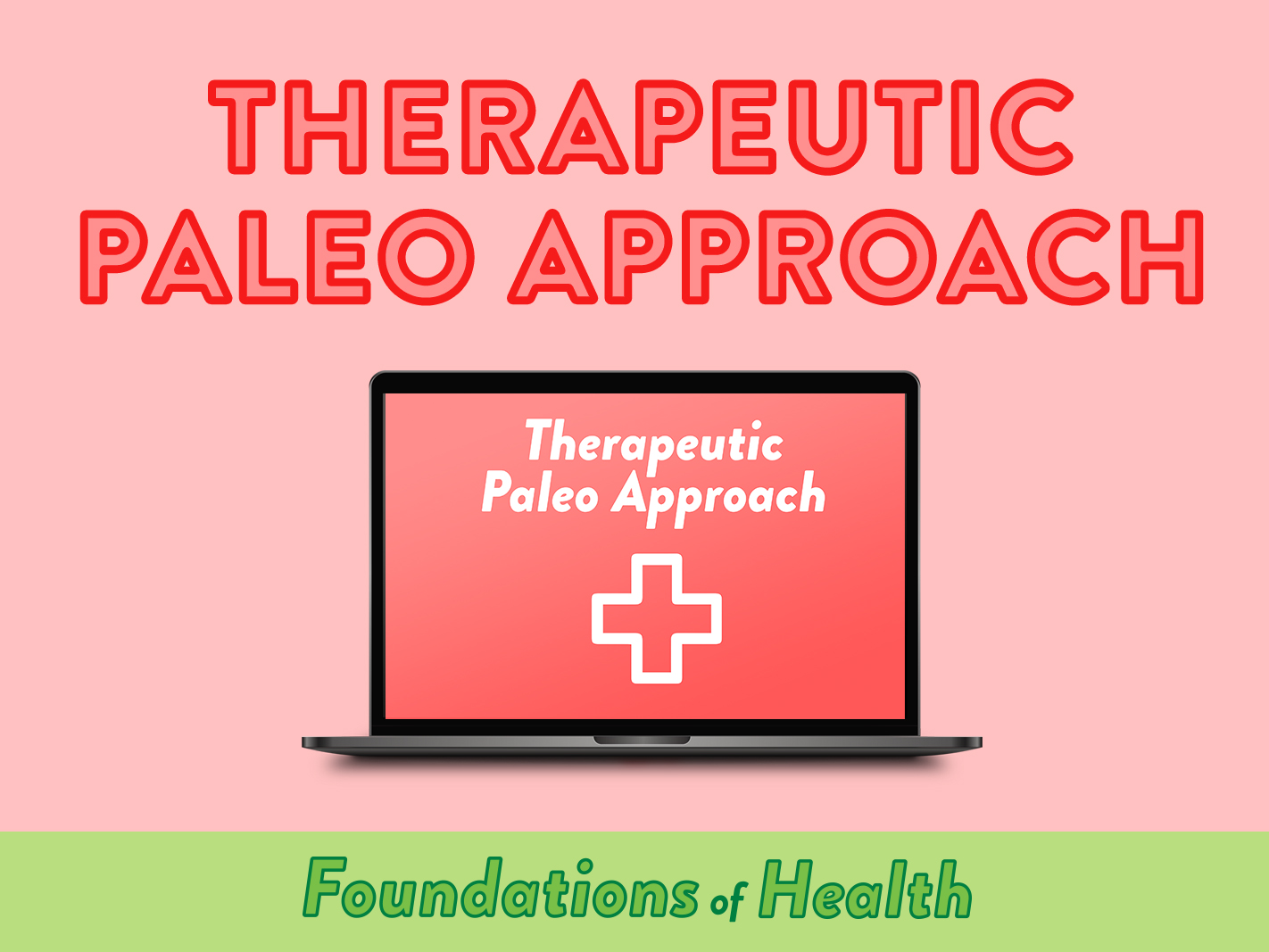 Therapeutic Paleo Approach online course
Therapeutic Paleo Approach online course
The Therapeutic Paleo Approach online course features 5 hours of video lecture that covers nutrient requirements of biological systems, prevalence and sources of nutrient deficiencies, top sources of nutrients commonly deficient, designing a nutrient-sufficient diet, sleep as a linchpin of health, impact of stress on health, activity balance and health, connection and health, links to the top mortality- and morbidity-causing chronic illnesses, and an introduction to the Autoimmune Protocol! This is a great starting point if you learn better with videos and visual guides than reading a book, and are looking for a broad overview with a positive what-to-eat focus. Get instant access here.
The AIP Lecture Series intensive online course
 In this 6-week, video-based, intensive and interactive online course, I teach the scientific foundation for the diet and lifestyle tenets of the Autoimmune Protocol, plus provide tons of tips and strategies for implementation, refinement and troubleshooting! It’s also my opportunity to provide individualized guidance and support, and I connect with every single student within a private Facebook group for the course and answer every single question posed during the session.
In this 6-week, video-based, intensive and interactive online course, I teach the scientific foundation for the diet and lifestyle tenets of the Autoimmune Protocol, plus provide tons of tips and strategies for implementation, refinement and troubleshooting! It’s also my opportunity to provide individualized guidance and support, and I connect with every single student within a private Facebook group for the course and answer every single question posed during the session.
This course is perfect if you learn better in an interactive, supportive multimedia environment, want to dive deep into the why’s, and want the most comprehensive understanding of the full AIP possible. I gear this course at all levels, from the person completely new to the AIP all the way to the seasoned pro who is looking to take their AIP to the next level.
The next session of the AIP Lecture Series begins January 18th, 2021.
You can learn more about the AIP Lecture Series here.


